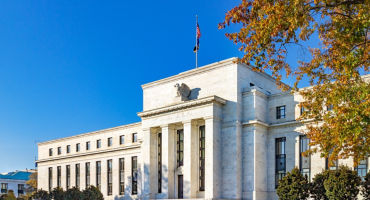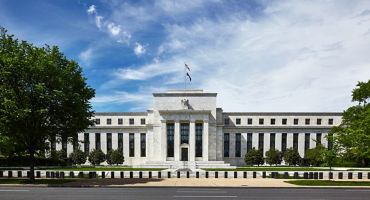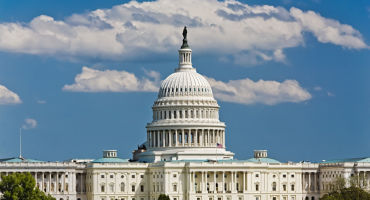- Investment Director
Skip to main content
- Funds
- Insights
- Capabilities
- About Us
- My Account
Our Funds
Fund Documents
Global Multi-Strategy Fund
The views expressed are those of the authors at the time of writing. Other teams may hold different views and make different investment decisions. The value of your investment may become worth more or less than at the time of original investment. While any third-party data used is considered reliable, its accuracy is not guaranteed. For professional, institutional, or accredited investors only.
All eyes on inflation lately. US headline inflation, as measured by the Consumer Price Index (CPI), hit an eye-popping 9.1% year over year for June 2022, its highest level since 1981. The following month, it fell to 8.5% year over year, aided by some near-term energy price relief and improved supply-chain conditions, and may well have peaked for 2022 — a welcome respite for consumers and businesses feeling the pinch of today’s elevated prices. The US Federal Reserve’s (Fed’s) commitment to raising interest rates has pushed inflation expectations down as well (Figure 1), leading to a pause in the recent outperformance of inflation-sensitive assets.
However, we are not out of the woods by any means. Core US inflation (ex-food and energy prices) remains uncomfortably high at around 6%, with a broad number of contributors across the underlying subcategories. Better-than-expected jobs growth and historically low unemployment have also driven labor costs up sharply. More to the point, we think the structural inflation story 2022 began with is far from over. With that in mind, we believe now may be an opportune time for investors to add real-asset and inflation-sensitive exposures to their portfolios.
With inflation expectations down and a global recession now baked into many economic forecasts, natural-resource equities and commodities struggled in June and the first half of July, before rebounding over the last month. We believe the structural supply challenges for these sectors are still in place and will remain important return drivers going forward:
Our bullish case for inflation-hedging assets has been consistent since early 2021 and is essentially intact as of this writing:
1Roll yield is the amount of return generated in a commodities futures market after an investor “rolls” a short-term contract into a longer-term one and profits from the convergence of the futures price toward a higher price.


Japan's reflation story: An overlooked equity opportunity?
Continue readingCommercial real estate debt: Transitional assets deep dive
Continue readingTwilight zone: how to interpret today’s uncertain macro picture
Continue readingURL References
Related Insights
Stay up to date with the latest market insights and our point of view.

Are hedge funds the missing ingredient?
Inflation, volatility, and valuations — they all raise questions about portfolio diversification and resilience. Multi-Asset Strategists Nanette Abuhoff Jacobson and Adam Berger explain why multi-strategy and equity long/short hedge funds could provide the answers. They offer insights on adding allocations to a traditional portfolio mix and a recipe for manager selection.

Japan's reflation story: An overlooked equity opportunity?
Macro Strategist Nick Wylenzek analyzes the structural shifts in Japan's economy and identifies potential equity opportunities.

Commercial real estate debt: Transitional assets deep dive
Our private commercial real estate debt experts explore transitional CRE assets, highlighting their key characteristics, how they differ from other parts of the CRE debt universe, their potential roles in a portfolio, and much more.

FOMC: Cushioning the US labor market
Fixed Income Portfolio Manager Jeremy Forster analyzes the Fed's decision to cut interest rates at the September FOMC meeting.

Is it time to prepare for stagflation?
Discover why concerns about stagflation are rising, and how asset allocators may be able to hedge the effects on their portfolio.

Twilight zone: how to interpret today’s uncertain macro picture
Macro Strategist John Butler and Investment Director Marco Giordano explore how to interpret today’s uncertain macroeconomic picture and its key implications.

Rethinking the Fed’s dual mandate
Is it time for a fresh perspective on the dual mandate? Fixed Income Portfolio Manager Brij Khurana explores the potential benefits of reorienting monetary policy toward maximizing productivity.

Stagflation watch: Thoughts on tariffs, inflation, and Fed policy
US Macro Strategist Juhi Dhawan considers signs the US economy may be moving toward a toxic mix of slowing growth and rising inflation, creating challenges for the Fed and investors.

One Big Beautiful Bill: Why it’s “buy now, pay later” for markets
Multi-Asset Strategist Nanette Abuhoff Jacobson weighs the near-term benefits of the recently enacted US tax and spending bill against the longer-term costs, and suggests several investment implications.

The power of positive and pragmatic thinking
While markets have a lot to worry about, from government policy to geopolitics, Global Investment and Multi-Asset Strategist Nanette Abuhoff Jacobson looks at the world from another angle: What could go right? She offers five reasons for positive thinking and considers the investment implications.

FOMC: Patiently waiting to ease
Jeremy Forster discusses the Fed's steady policy rates, inflation forecasts, and potential interest rate cuts amidst economic uncertainties.
URL References
Related Insights